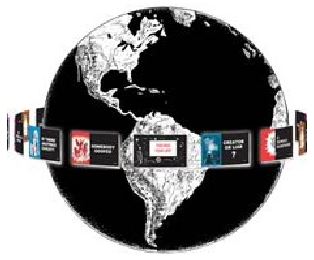RV 1960 Polluted with Roman Catholic Flavor
- Issue Date: November/December 2010
One of the main areas of concern by the translators of the Reina-Valera-Gómez Spanish Bible was the shift toward Roman Catholic doctrine found in the Reina-Valera 1960 version and other modern versions such as the Spanish translation of the NIV, the NVI, and the LBA, the Spanish NASB. In the Appendix of Emanuel Rodriquez's book, God's Bible in Spanish: How God Preserved His Words in Spanish Through the RVG, he lists several verses where obedience is substituted for believing. In John 12:47 Jesus said that if anyone hear His words and "believe not," KJV, ("no cree" RVG), will be judged. The RV 1960 says "does not keep them" (no las guarda,). The LBA also uses "keep," (guarda) but the NVI uses "obedece" (obey). Both "keep" and "obey" are entirely different from "believe," reinserting salvation by works that Martin Luther and the other fathers of the Reformation fought Rome over.
Other evidence of this pollution appears in Romans 11:30-32 where "did not believe" (no creisteis) and "unbelief" (incredulidad) in the KJV and RVG were changed to "disobedient," (desobedientes) in the RV 1960, LBA and NVI. (See also: Hebrews 3:18, 11:31, and Matt. 17:20.)
Oddly enough, even the older Reina-Valera versions, 1865 and 1909 use "incredulidad" (unbelief). This shows how the influence of the Vatican began to creep into the Spanish Bibles just as the English versions were beginning to change the same way.
Some changes relate to the turning of Jesus' mother, Mary, into the Virgin Mary goddess of Catholicism. In Isaiah 7:14, "a virgin (una virgen) shall conceive," is changed to the virgin (la virgen). The Bible portrays Mary as just another virgin girl who was especially chosen for the task of bearing Jesus' body. It was not through any special merit of her own that she was "highly favored."
But the popes have transformed her into a goddess-level being, exempt from original sin, given an early ticket to heaven (bodily assumption), lobbyist #1 in heaven's politics with constant access to Christ's ear, co-redeemer of mankind, and with divine ability to hear millions of prayers at once and respond appropriately to each. If you ask any devout Roman Catholic: "who is the virgin?" he will likely point you to the idol statue of this goddess. This is only a small sample of the examples in the 40-page appendix of Rodriguez's book where he "documents many of the important differences between the various Spanish Bible versions and demonstrates the purity and accuracy of the RVG text." He compares the various readings of five of the popular Spanish Bibles with the KJV and the Reina-Valera-Gómez text.
It was not the intent of the team that created the RVG to translate a new version from the original Greek and Hebrew. They saw that the versions of the RV done in the 20th century had been influenced by the same Critical Texts that polluted the English Bibles.
So they chose the modern RV that had the least changes, the RV 1909, and compared it to the earlier RV editions, the manuscripts that were used to create the KJV, and the KJV itself. They strove to maintain the linguistic beauty and purity of the RV versions, only adjusting the readings that deviated from the Received Text stream.
They believe that the result is a return to the purity of God's words preserved from the corrupting influences of the Alexandrian-Roman Catholic manuscripts. Rodriguez's book, God's Bible in Spanish..., describes in detail, the years-long process that led up to the final publishing of the Reina-Valera-Gómez (RVG 2010) Spanish Bible.
- See more articles on related topics:
- Bible Versions
- Catholicism
- Reina Valera
- Bible Translation
- Spanish Bibles
Other Articles from November/December 2010:
- Europe is in Convulsions
- Are We Losing the Next Generation?
- Pope Visits U.K., Pitches Return to Mother Church
- Muslims Demanding That Holland Abandon Freedom of Speech
- Europe May Be Ready for the True Gospel
- How Did We Get Here?
- Immigration: Soul Winner's Opportunity
- Message From Jack Chick - Nov-2010
- Chick Mail Bag November/December 2010
More on Bible Versions:
Products of Interest:
-

God's Bible in Spanish
240 pages
Until now, no Spanish Bible was completely free from corrupted Alexandrian texts. Here’s the fascinating story of the making of the Reina Valera Gomez Bible 2010, the first Spanish Bible to faithfully follow the Received Text in every single verse. -

Spanish - God's Bible in Spanish
240 pages
Until now, no Spanish Bible was completely free from corrupted Alexandrian texts. Here’s the fascinating story of the making of the Reina Valera Gomez Bible 2010, the first Spanish Bible to faithfully follow the Received Text in every single verse. -

Did the Catholic Church Give Us the Bible?
208 pages
The Bible has two histories. One is of God preserving His words through His people. The other is of the devil using Roman Catholic "scholars" to pervert God’s words and give us corrupt modern Bibles.



